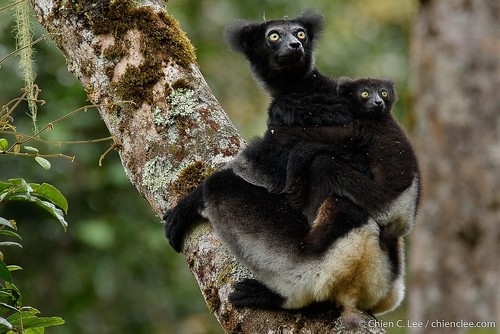
Indri
The indri captivates with its haunting calls echoing through Madagascar's rainforests. This largest lemur, clad in contrasting black and white, leaps gracefully from tree to tree. Its unique role as a seed disperser aids forest regeneration, highlighting its ecological importance and enchanting presence.
15-22 years
Lifespan
6.0 - 9.5 kg
Weight
Height: 64 - 72 cm
Size
Brown, Grey, Black, White
Color
8-9 years
Age of Sexual Maturity
8 months
Age of Weaning
20 mph
Top Speed
Critically Endangered
Conservation Status
Decreasing
Population Trend
Characteristics
The Indri indri, commonly known as the indri, is the largest living lemur species. Native to Madagascar's rainforests, it features striking black and white fur, long limbs, and a short tail. Known for its powerful, eerie vocalizations, the indri's calls can be heard over great distances. It primarily feeds on leaves and fruits.
Distribution Range of the Indri
Indri indri, commonly known as the indri or babakoto, is native to the northeastern region of Madagascar. This species is endemic to this island nation, meaning it is found nowhere else in the world. Its distribution is primarily concentrated in the rainforests of Madagascar, specifically within the regions of Analamanga, Alaotra-Mangoro, Atsinanana, and Sava.
Indri's Habitat
Environmental Conditions
The indri inhabits tropical moist broadleaf forests, which are characterized by high humidity and substantial rainfall throughout the year. These forests are dense and provide ample food sources and shelter. The climate in these regions is typically warm and humid, with temperature variations depending on altitude.
Ecological Niche
Indris play a crucial role in their ecosystem as folivores, primarily feeding on leaves, but also consuming fruits, flowers, and seeds. They are arboreal and diurnal, spending most of their lives in the forest canopy where they move by leaping between trees. This lifestyle helps in seed dispersal, contributing to forest regeneration. Indris have adapted to living in the forest canopy with their powerful hind legs and specialized vocalizations for communication across dense foliage.
Copyright @ Nature Style Limited. All Rights Reserved.
 English
English